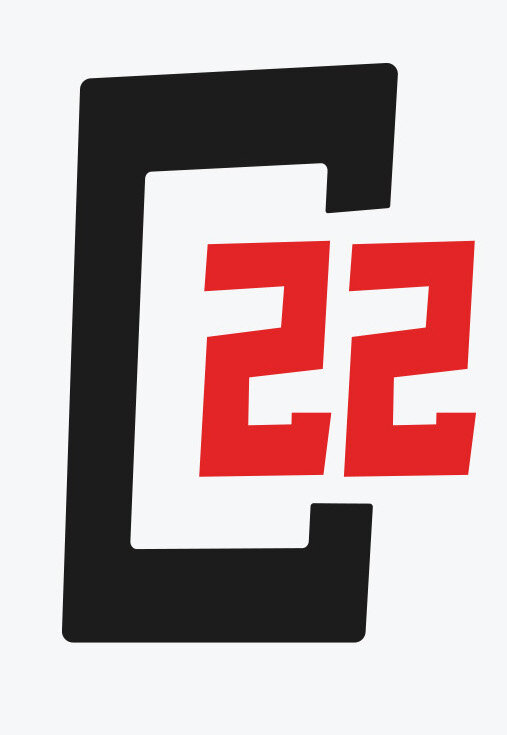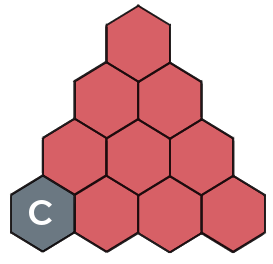MANEUVERS and Planning a Turn
Using the two cards drawn at the start of the turn, a character needs to decide where to best use those cards this turn. One of these cards can be assigned to a maneuver to define how the player plans to take their turn.
What is a Maneuver
A maneuver is a tactical option available to a character. An example of the layout for maneuvers is shown below.
The option on the left-hand side is always available to the Player, while the option on the right-hand side is available only if the requirement in the middle is met. If the card assigned to the maneuver meets the requirement in the middle of the maneuver block, then the player has access to use the enhanced version on the right side.
In the above example, the character can spend two main actions to move three times this turn, but if the maneuver card is a spades card of 5 or higher, then the character can move four times this turn instead.
Starting Maneuvers
All characters start with the following 4 maneuvers available to them. This means a character always has at least 4 options of tactical decisions to perform each combat round. Specific maneuvers are shown in Default Maneuvers.
You can choose one maneuver to use at the start of the turn. You must meet the requirements of the maneuver, i.e if the maneuver says -2 movement actions, you must have two movement actions available when you select the maneuver.
When using a card to make a weapon attack, the card value, plus your character’s skill with their weapon, determines the Accuracy of the attack. The other card, is used to determine the Accuracy of any effects applied from your chosen maneuvers.
Weapon Skills
Weapon Skills are a unique type of General Skill with a set four Specific Skills: Diamonds, Spades, Hearts, and Clubs. Skill points are spent the same way as other General Skills, spending points to increase the ranks of the Specific Skills. The difference in Weapon Skills is that ranks in the Specific Skills unlock new or improved maneuvers available to the character while in combat.
Reading Maneuvers
The Default Maneuvers section contains a list the names of the maneuvers along with the details of the abilities they grant your character. As you advance in rank of the Specific Skill, you will be able to learn the next rank of that Maneuver. Using the Melee Heavy Crush maneuvers on the right as an example, if your character has 2 ranks in the Spades Maneuver they would be able to add the second rank of Dazing Cleave to their character sheet.
Reading Weapon Types
Weapon Skills are categorized by groupings of weapons. The name is a combination of the weapon’s range, weight, and damage type. For example, a character using a knife would have the Weapon Skill for Melee, Light, Slash weapons granting bonuses and maneuvers when using that type of weapon.
The Skill Tree for Weapon Skills is different from other General Skills and is shown at the end of the Default Skills section.
Finally, the associated Potential for Weapon Skills is either Strength or Finesse. The bullets below help identify these associations.
Weight: Heavy – Strength
Weight Medium - Strength or Finesse
Weight: Light – Finesse
Range: Long – Finesse
Type: Barrier - Strength
Additional Details
Melee weapons are anything that can reach within 2 to 4 meters, or 1-2 hexes. Examples include, Axes, knives, lightsabers, police batons, spears, or tasers.
Short weapons, or short ranged weapons, are weapons with that can reach up to 12 meters, or 6 hexes, without loss of function. Examples include throwing knives, shuriken, short bows, handguns, or shotguns.
Long weapons, or long-range weapons are weapons that can easily reach up to 24 meters, or 12 hexes without loss of function. If characters with a Long weapon start their turn adjacent to an enemy, they draw their starting cards with disadvantage. Examples include longbows, crossbows, rifles, or laser rifles.
Weapons that can be used outside this range would fall into a separate category of artillery. Maneuvers do not apply to them.
Barrier weapons are weapons that protect a character by providing defense of some type. This would include shields of all types, portable deploy-able cover, or other setting specific defensive items.
Various terms are be used throughout the maneuvers to describe common attacks. Please see the glossary below for information regarding each of these. For the described shapes, a graphic accompanies the name. The C hex represents the position of the character using the maneuver.
Maneuver Shapes
Circle Shape
Cleave Shape
Small Cone Shape
Impale Shape
Large Cone Shape
Whirlwind Shape
Line Shape
Line Adjacent Shape
Maneuver Key Terms
+/- X acc: +/- X accuracy; +1 acc = +1 accuracy
+/- X movement: the character has X less or more movement actions this turn. If they do not have a movement action to spend, they cannot use this maneuver.
+1 attack/reaction: the character has an additional attack action, or reaction.
Bolster: Character gains temporary resistance to the listed Effect for two turns.
Bypass: This attack cannot be blocked parried or dodged.
Each: Deal full damage to each hex in the Shape
X Free Reaction +Y: The next X reactions of the listed type are free until the start of your next turn. They get a success modification of +Y. Example, 1 Exploit +2, grants one free Exploit with a +2 modifier.
Free Reaction: All reactions of the listed type are free until the start of your next turn.
X Free Step: The Character may take X number of Steps. A Step is defined by moving 2m (1 hex) without provoking an attack of opportunity.
On Hit: If the attack’s accuracy is higher than the target’s avoidance the attack is considered a hit.
On Kill: If the target is killed this turn, do this maneuver.
Recovery Action Name (i.e. Rally, Comfort, Recuperate, Adrenaline Rush, Shake): Grants the ability to use this action without the use of an action point. The ability still requires recovery points.
Split: Split damage evenly among all targets in the shape. This damage is rounded up.
Status +1: The status has a modified chance to hit.
Example: Slowed +1 would have an additional +1 modified chance to apply the slow effect to the target, while a Stun -1 would have a -1 modified chance to stun the target.
Status Self: Target this Character with this status. It can automatically succeed if you wish.
Status (X): This status has an extended duration. The status last for X turns instead of the standard 2 turns.











